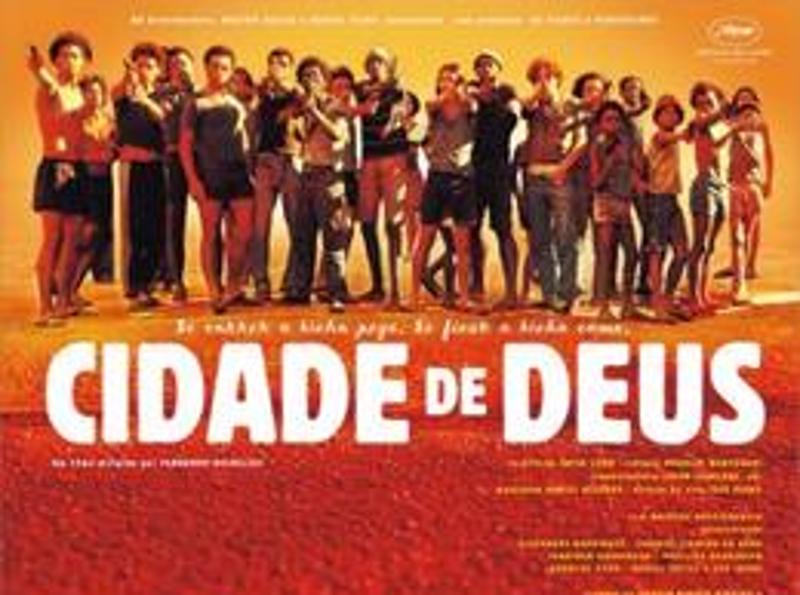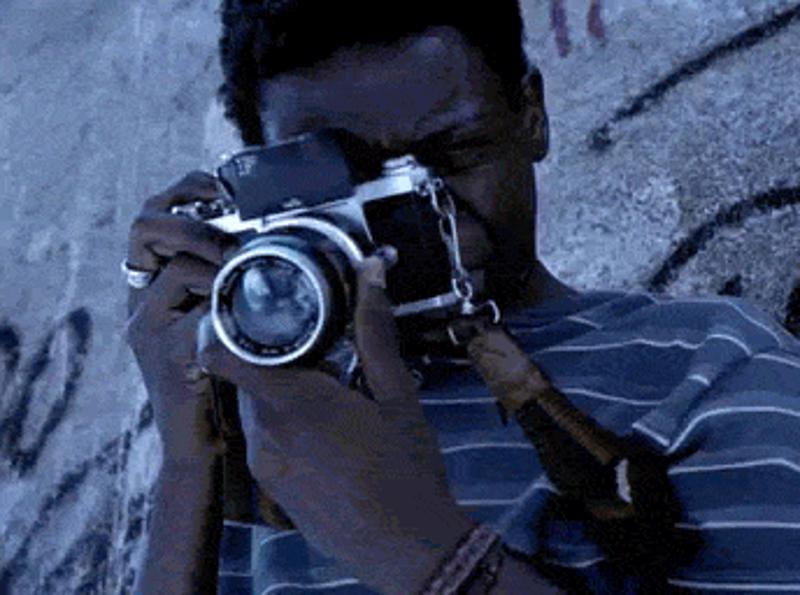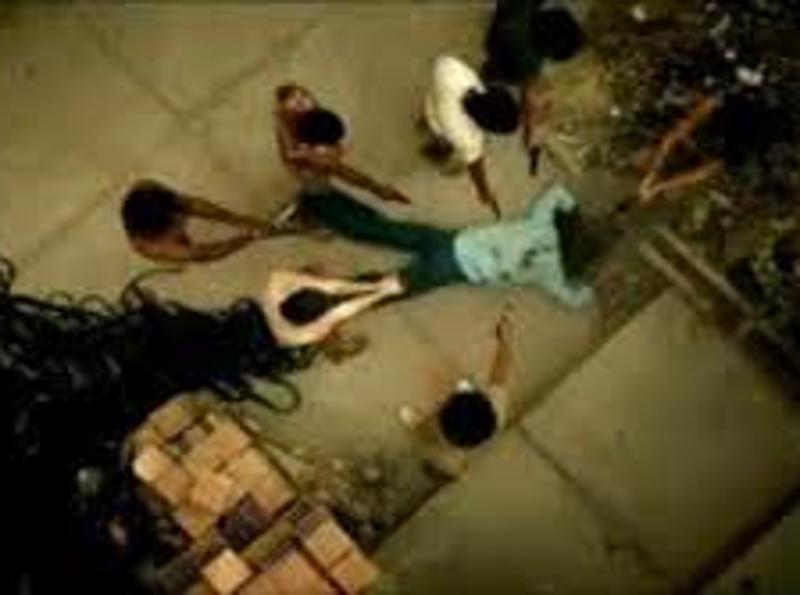My diary
First of all, what a powerful film that I of course had never seen or really heard of. Amazing to me to think that this was a critically acclaimed film, yet what transnational influence did it truly have? The Rio Olympics came and went this year and I wondered how these communities have changed or remained the same in Brazil. There was a ton to unpack in the film and of course a ton to relate to our readings. One thing to mention before getting into any of the film was how influential the language barrier was to me. I never watch films in another language that are then subtitled in English, and this really challenged me to think about what this meant, and how often others watch american films in subtitles. He further displaced me from position as simply a viewer of film, and forced to recognize the lens through which I would view the film, and the fact that I may never fully grasp the film to my core without understanding it in Portuguese. Certain meanings of words would get lost in my view, meaning I would need to be even more self conscious and critical as I watched.
To start with a very brief synopsis, the film is seen through the lens of the main Character "Rocket", an aspiring photographer who longs for ability to take photos. The film takes place in the "City of God" beginning in the 1960's, a hidden slum in Rio filled with corruption, drugs and violence. The film starts with following the "the tender trio", a group Rocket's older brother is a part of. The group robs trucks and banks gives money back to folks in the city who then protect them. Until one night they take a younger boy name Lil Ze with them after he convinces them to rob a hotel (a hotel that is really a sort of brothel). The trio robs all of the folks inside and Lil Ze fires a warning shot. Lil Ze proceeds to massacre all of those inside. This results in folks believing the trio has performed this crime and they all must change their ways. Two of the members are killed, one by police, one by Lil Ze, and the other joins church. From here the film progresses as Lil Ze and his friend Benny become involved in drug dealing and kill off all other drug dealers to take over the city of god. All except a man named "Carrot". Rocket watches all of this take place through his own friend group and love interest who becomes involved with Benny. Benny is accidentally killed by another drug dealer who is attempting to kill Lil Ze at his Benny's going away party as he plans to move to a farm with his girlfriend. This results in Lil Ze raping the girlfriend and killing the family of a peaceful man Knockout Ned who was in the military. It also results in a gang war with Carrot who is joined by Knockout Ned. This gang war builds and builds as the two
jalorello
6 chapters
15 Apr 2020
City of God
November 12, 2016
|
Rio De Janeiro Brazil
First of all, what a powerful film that I of course had never seen or really heard of. Amazing to me to think that this was a critically acclaimed film, yet what transnational influence did it truly have? The Rio Olympics came and went this year and I wondered how these communities have changed or remained the same in Brazil. There was a ton to unpack in the film and of course a ton to relate to our readings. One thing to mention before getting into any of the film was how influential the language barrier was to me. I never watch films in another language that are then subtitled in English, and this really challenged me to think about what this meant, and how often others watch american films in subtitles. He further displaced me from position as simply a viewer of film, and forced to recognize the lens through which I would view the film, and the fact that I may never fully grasp the film to my core without understanding it in Portuguese. Certain meanings of words would get lost in my view, meaning I would need to be even more self conscious and critical as I watched.
To start with a very brief synopsis, the film is seen through the lens of the main Character "Rocket", an aspiring photographer who longs for ability to take photos. The film takes place in the "City of God" beginning in the 1960's, a hidden slum in Rio filled with corruption, drugs and violence. The film starts with following the "the tender trio", a group Rocket's older brother is a part of. The group robs trucks and banks gives money back to folks in the city who then protect them. Until one night they take a younger boy name Lil Ze with them after he convinces them to rob a hotel (a hotel that is really a sort of brothel). The trio robs all of the folks inside and Lil Ze fires a warning shot. Lil Ze proceeds to massacre all of those inside. This results in folks believing the trio has performed this crime and they all must change their ways. Two of the members are killed, one by police, one by Lil Ze, and the other joins church. From here the film progresses as Lil Ze and his friend Benny become involved in drug dealing and kill off all other drug dealers to take over the city of god. All except a man named "Carrot". Rocket watches all of this take place through his own friend group and love interest who becomes involved with Benny. Benny is accidentally killed by another drug dealer who is attempting to kill Lil Ze at his Benny's going away party as he plans to move to a farm with his girlfriend. This results in Lil Ze raping the girlfriend and killing the family of a peaceful man Knockout Ned who was in the military. It also results in a gang war with Carrot who is joined by Knockout Ned. This gang war builds and builds as the two

groups gain more and more weapons. Meanwhile Rocket starts delivering newspapers for a Rio paper. Knowing that Rocket loves to take pictures Lil Ze asks for him to take pictures of his gang. Rocket does this and the photos fall into the hands of the newspaper. The City of God is never seen in the paper and it has finally reached the eyes of a wider audience through photos and articles in the paper as the gang war has become so violent it is not top news throughout the city. The film ends with Rocket getting photos of a gang shootout which ends with the death of most major characters. Rocket ends with getting photos of police corruption as the police free Lil Ze in the city but take all of his money. A gang of younger kids shoots Lil Ze after this and Rocket photographs his bloodied body. He is left to give the newspaper photos of the corruption or photos of Lil Ze's bloody body. If gives photos of the body and ends up with an internship with the newspaper while a new gang of younger kids takes over the city of god unbeknownst to the rest of the city.
Sorry I still missed some stuff in the summary but I hit the main points! The are clear capitalist and neoliberal and racist consequences seen throughout the film. It is clear that the City of God is a slum of poor, darker skinned folks to keep them away from the pristine beaches of the global world in Rio. Left to their own devices, the city fights for survival through capitalism within the city. Money and murder are central to the story line (similar to an Akala song to be discussed in my next chapter). Here I am reminded of several stories throughout our readings. Specifically the story of Bengali women in the Chapter 4 of Dissident Friendships. The women of CHT are viewed as non-human just as the residents of the City of God. They are made more by neoliberal and capitalist norms produced within the city. The cycle continues to reproduce itself making it difficult for anyone to escape. Rocket's life is put at risk and he escapes with an unpaid internship for his labor. He also has the decision to protect himself from the corruption of the police. His fear of what may happen if he hands over the photo of the police corruption means that he takes the easier route. He gets himself out of the City of God but does nothing to dismantle the system. Similar to the CHT, the City of God is constantly occupied and colonized by the state, they come, take what they want, and leave. They allow the violence to occur as long as it does spill out of the borders. When this does happen, they briefly step in, colonize, and remove themselves again. Here the film is also entirely masculine folks. The men are the producers of the violence and the shocking rape of women is in my view skimmed over by the pursuit of the masculine characters. There is no justice for the violence and killing therefore there is certainly no justice for the rape and violence against women occurring throughout the film.
Another point about the media in the film reminds me of Chapter 11 in

Circuits of Visibility. As Sun writes on page 196 “the figure of the dagongmei stands in as an example of China’s exploitation of its vast rural population—a reminder of how class and gender produce specific conditions of subjugation to accelerate capital accumulation in China’s increasingly globalized capitalist market.” Lil Ze is awstruck by his first photo in the newspaper. He becomes famous. This fame then results in a thirst for more. Just as the domestic laborers of China, the people of the City of God will witness a reality of fame that can never be attained. To me the people of the City of God support the globalized capitalist market through the underground criminal activity. The drugs I assume come from more wealthy individuals outside of the city. The police sell arms to the groups to fuel the war. All of this contributes to the wealthy elite outside of the city while the non-human members of the city of god are kept out of sight of tourists.
I am left to wonder about the purpose and stance of the film. Can the film serve as a transnational production to bring to light the atrocities and needs of a poor community in Brazil? It seems to me the film instead reproduces the capitalist and neoliberal ways of the city of god. The violence of the movie serves as a spectacle for those who view it. Instead of creating a call for action the violence numbs you in only the way a spectacle can. Just as the newspaper of the film pursued the violence for a greater story, I fear the violence of the film does something similar. It is a really well done film that explores so many themes, but I wonder what good it is, if it does not bring attention to an issue of humanity. I further explored the DVD extras and learned that the producers picked mostly amateur actors from real life favelas to bring authenticity to the film and because there was a lack of black actors. This displaced some of the folks who participated in the film resulting in film actually having to setup support groups to support these folks after the film. I couldn't really find alot about this on if it was helpful or instead harmful for people involved in the film. For me this is similar to the Connoisseur discussed in chapter 9 of CV. As the author writes in discussing rugs, "the transnational circulation of the commodity relies on the discourse of difference in order to produce both subjects of production and consumption. The connoisseur text’s interweaving of the tribal female carpet weaver’s labor with the sensory and exotic appeal of Orientalia transforms the carpet into a sublime and mobile object." (pg. 158) Similarly the film won a ton of awards and is ranked among some of the top films ever made. It is a sort of Connoisseur production for media elites. It has been circulated as a commodity transnational and consumed around the globe. It uses the exotic appeal of violence and the other to pull folks in and at the same time both supports the real life actors who took part in the film while also using them to produce the commodity of film.

There is really alot more I could discuss on the film from the masculinity of the groups, to the lens of Rocket as photographer and media producer. The film is filled with possible analysis.
In the end I was struck by the film's production and use of violence as spectacle (yet also recognizing the reality this attempted to produce). I am left further witnessing the dehumanization of folks throughout the world for capitalist production and the way media plays a role in both expanding this production and attempting to disrupt it. I wish the film could do more to disrupt this on a larger scale, but I fear that may only come from viewing the film through a particular lens such as the one of this course.
Chowdhury, E. and Philipose, L. (Eds.). (2016). Dissident friendships: Feminism, imperialism and transnational solidarity. IL: University of Illinois Press. (DF)
Hegde, R., S. (Ed.). (2011). Circuits of visibility: Gender and transnational media cultures. NY: New York University Press. (CV)
Share your travel adventures like this!
Create your own travel blog in one step
Share with friends and family to follow your journey
Easy set up, no technical knowledge needed and unlimited storage!